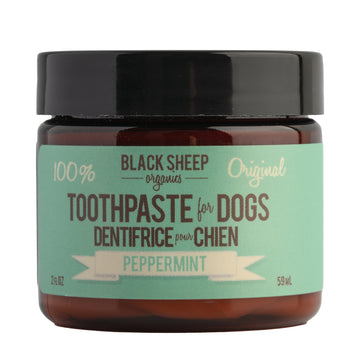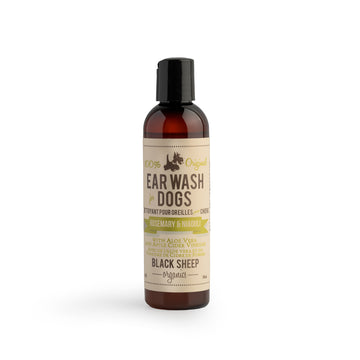How to Prevent and Safely Remove a Tick from Your Dog?
May 25, 2024
Discovering a tick on your dog can raise an alarm. These tiny parasites can transmit diseases, so it's important to remove them promptly and safely. In this post, we'll guide you through the tick removal process step-by-step, offering clear instructions and helpful tick-prevention tips to ensure a stress-free experience for both you and your furry friend.
What Does a Tick Look Like on a Dog?
Understanding what ticks look like and where to find them on your dog is crucial for early detection and prevention of tick-borne diseases. Here’s a straightforward guide to help you.
Visual Characteristics of Ticks on Dogs
Ticks vary in size, shape, and color but share some common features that make them identifiable:
- Size and Shape: Before feeding, ticks can be as small as a sesame seed. After feeding, they may swell up to the size of a pea.
- Color: They range in color from shades of brown and black to reddish-brown. The Lone Star tick, for instance, is recognizable by the distinct white spot (or "lone star") on the female's back.
- Legs: Ticks have eight legs, distinguishing them from other insects found on dogs.
Common Places to Find Ticks on Your Dog's Body
Ticks can attach themselves anywhere on your dog’s body but prefer warm, moist areas. Regularly check these common hiding places:
- Ears
- Under the collar
- Between the toes
- Groin area
- Under the front legs (armpit region)
- Around the tail base
The Best Practices for Tick Prevention
Protecting your furry friend from ticks is paramount in ensuring their health and happiness. Here, we break down the most effective preventive measures and discuss the safe use of tick repellents.
Preventive Measures to Protect Dogs from Ticks
Every dog owner should make tick prevention a part of their regular grooming routine. Here are some simple yet effective ways to keep ticks at bay:
- Regular Checks: Following outdoor activities, particularly in wooded or grassy regions, conduct a thorough examination of your dog for ticks. Pay extra attention to hidden spots like behind the ears, between the toes, and under the armpits.
- Landscape Maintenance: Keep your yard trimmed and tidy. Ticks thrive in tall grasses and brush, so mowing your lawn regularly and removing leaf litter can reduce tick populations in your outdoor space.
- Protective Treatments: Use veterinarian-recommended tick prevention treatments year-round. These can include:
- Topical Medications applied directly to your dog's skin
- Oral Tablets that can kill ticks and prevent infestations
- Tick Collars designed to release chemicals that repel ticks
- Off-leash Dog Spray before out-door activities
- Avoid Tick Habitats: When possible, steer clear of known tick-infested areas, particularly during warmer months when ticks are most active
Tick Repellents and Their Safe Use
Choosing the right tick repellent and using it correctly is crucial for your pet’s safety and effectiveness of the product.
- Select Wisely: Opt for repellents specifically formulated for dogs. Products intended for humans may contain substances like DEET, which can be harmful to your pet.
- Follow Instructions: Read and adhere to the product's application guidelines. The dosage often depends on the dog's size and weight.
- Consult Your Vet: Before starting any new tick prevention regimen, talk to your veterinarian. They can provide tailored advice based on your dog’s health, lifestyle, and risk factors.
- Monitor for Reactions: Upon administering a new repellent, closely monitor your pet for symptoms of discomfort or negative responses, including abnormal scratching, skin redness, or unusual fatigue. Should any worrisome signs emerge, promptly reach out to your veterinarian.
- Combination Strategies: Sometimes, using a combination of preventive measures works best. For instance, pairing a tick collar with regular checks can enhance protection.
How to Remove a Tick from a Dog?
Now that you understand the importance of tick prevention, let's go through the steps to remove a tick from your dog safely.
- Gather Your Tools:
- Fine-tipped tweezers or a tick removal tool
- Gloves to protect yourself
- Antiseptic solution or wipes
- A small container or zip-lock bag for disposing of the tick
- Stay Calm and Prepare Your Dog:
- Keep your dog calm. Offer treats or have another person help soothe them.
- Wear gloves to avoid direct contact with the tick.
- Remove the Tick:
- Using the tweezers or tick removal tool, grasp the tick as close to the dog’s skin as possible, near the mouth parts, not the body.
- Pull upward with steady, even pressure. Do not twist or jerk, as this could leave parts of the tick embedded in the skin.
- Avoid squeezing the tick's body, as this can increase infection risk.
- Clean and Disinfect the Bite Site:
- After the tick is removed, clean the area with antiseptic wipes or soap and water.
- Apply a small amount of antiseptic ointment if you have it.
- Dispose of the Tick:
- Place the tick in the container or bag with rubbing alcohol to kill it.
- Do not crush the tick with your fingers.
- Monitor Your Dog:
- Keep an eye on the bite site for signs of irritation or infection.
- Monitor your dog for symptoms of tick-borne diseases in the weeks following removal, such as lethargy, fever, or loss of appetite.
How to Calm Your Dog During Tick Removal?
It's important to keep your dog calm during tick removal to avoid any sudden movements that could cause the tick's mouth parts to break off in the skin. Here are a few tips for calming your dog during this process:
- Choose the Right Moment: Try to remove the tick when your dog is naturally calm or tired, such as after a meal or a long walk.
- Comforting Touch: Gently pet your dog before and during the process to reassure them. Use a soothing voice to keep them relaxed.
- Distraction Techniques: Have someone else distract your dog with treats or their favorite toy. This can help keep them still and focused on something other than the tick removal.
- Take Breaks If Needed: If your dog becomes too anxious or stressed, it's okay to take short breaks. You want the experience to be as positive as possible for them.
- Reward Them: After successfully removing the tick, give your dog plenty of praise and some extra treats. This can help create a positive association and make future tick removals easier.
Remember, early detection and proper removal are key. These steps and preventative measures are to help keep our dogs safe from tick-borne illnesses at home, but should not be treated as medical basis. If you're ever unsure about a tick or notice any concerning symptoms in your dog after a bite, consult your veterinarian promptly.










